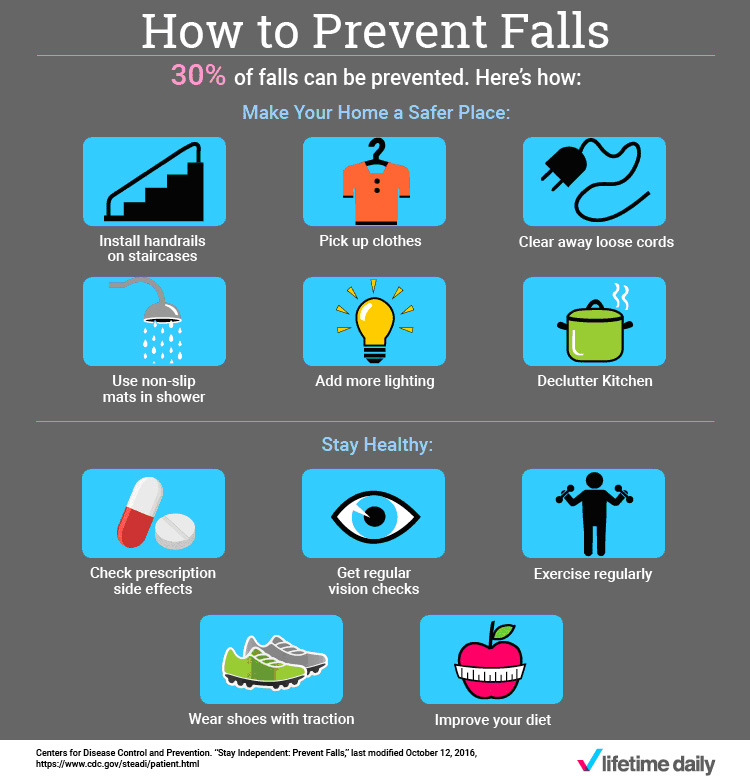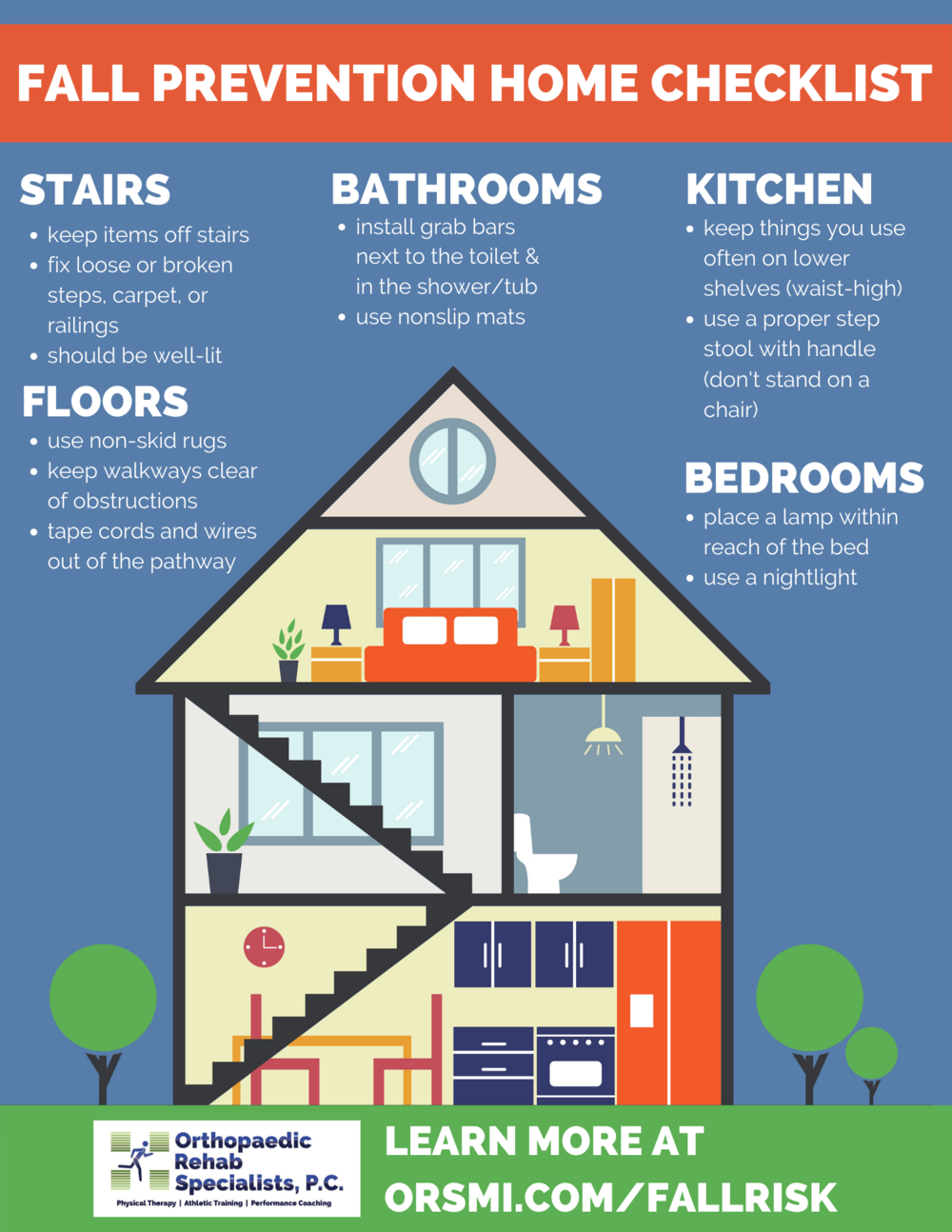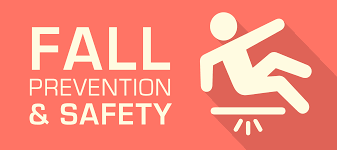Approximately 36 million adults fall each year in the home, grossing billions of dollars in medical expenses. The life expectancy is continuing to climb and more older adults would like to continue to live in their home independently without fear of falls. So what do we do? An estimated 32,000 in home falls can be prevented every year. So what’s the secret? How do I continue to live at home independently without having that constant fear? Well to put it plainly there are many simple things that you can do to reduce the risk of falls and create a more suitable environment that promotes safety, here’s how!
Identify the Risks
Borelli Lima Giacomini et al. (2020) investigated a series of studies used to identify risk factors in the older adult population. These studies utilize multiple collection scales to predict an individual’s risk for fall by examining predisposed factors. When looking at one of the studies it was determined that of the 261 participants, 51.7% were determined to be high risk for falls in the home. Factors included in the study consisted of both intrinsic and extrinsic influences. On evaluation it was noted that the primary extrinsic factors contributing to falls included adequate lighting, clutter on floor, appropriate clothing and footwear and the use of assistive materials. Intrinsic factors consisted of current pathologies, phycological effects (fear of falling) and the use of medications and their associating effects. So what does this mean? There are far more factors that may put you at risk then meets the eye. One of the best defenses against falling is to find out what you are up against. Have your doctor perform a comprehensive exam to catch those risk factors that may be eluding you.
Look to the little things!
Fall prevention does not have to redefine your life. Subtle changes can be made around your home that could greatly reduce your fall risk and promote safety. Lets take a look at a few of these easy changes.

- Make your home safe.
- Talk to your Doctor about your risks.
- Have annual eye exams.
- Stay vigilant.
- Eat Healthy.
- Wear proper footwear.
- Check for prescription side-effects.
- Install handrails on stairs.
- Remove all clutter.
- Clear any loose cords.
- Use non-slip matts in shower.
- Have handrails in shower.
- Ensure sufficient lighting.
- Keep kitchen clutter free.
- Remove throw rugs and carpets.
- Do not wear socks on hard surfaces.
- Add bright tape to stair edges and step downs.
- Ensure floor boards are flat and in good condition.
- Always have emergency access on your person!

Build a Foundation with Exercise!
Through research and analysis of fall development over the past few decades, exercise has displayed beneficial roles in negating falls and lowering overall medical expenses. Rose (2008) describes exercise as having three indirect roles that contribute to lowering the risk of falls. These roles include preventing pathology and system impairment, slowing the onset of disease processes and restoring function to activities of daily living. Rose (2008) points to a series of studies where participants were given individualized exercise programs that they followed for 3 months. The study concluded those involved in the program had less falls in the following year then those not following the regimen. The roles of the exercise program assist in building up the individual physical and physiological fortitude resulting in a reduction in both intrinsic and extrinsic fall risks factors. Rose explains that the studies are evident of the benefits received from individualized exercise programs. Whether used independently or in conjunction with additional fall prevention strategies, exercise is a vital component in increasing autonomy and lowering your risk for falls.

You deserve to feel safe in your home. Independence and autonomy are right around the corner by following these simple steps. Talk to your doctor, identify and remove risk factors and start a simple exercise regime. Give your loved ones the confidence they deserve and take the first step to a fall-free life!
References
Borelli Lima Giacomini, S., Fhon, J. R., &, R. (2020). Frailty and risk of falling in the older adult living at home. Acta Paulista de Enfermagem, 33(3), https://doi.org/10.37689/actaape/2020AO01
Centers for Disease Control and Prevention. (2020, December 16). Keep on your feet- preventing older adult falls. Centers for Disease Control and Prevention. https://www.cdc.gov/injury/features/older-adult-falls/index.html.
Centers for Disease Control and Prevention. (2021, June 4). Still going strong campaign. Centers for Disease Control and Prevention. https://www.cdc.gov/stillgoingstrong/.
Fahlström, G., Kamwendo, K., Forsberg, J., & Bodin, L. (2018). Fall prevention by nursing assistants among community‐living elderly people. A randomized controlled trial. Scandinavian Journal of Caring Sciences, 32(2), 575–585. https://doi.org/10.1111/scs.12481
Rose DJ. (2008). Preventing falls among older adults: no “one size suits all” intervention strategy. Journal of Rehabilitation Research & Development, 45(8), 1153– 1166.https://doi.org/10.1682/jrrd.2008.03.0041
Turjamaa, R., Äijö, M., Tervo-Heikkinen, T., & Silén-Lipponen, M. (2020). A qualitative study of nursing students’ experiences in fall prevention for older home care clients. Journal of Aging Research,1–7. https://doi.org/10.1155/2020/7652623



